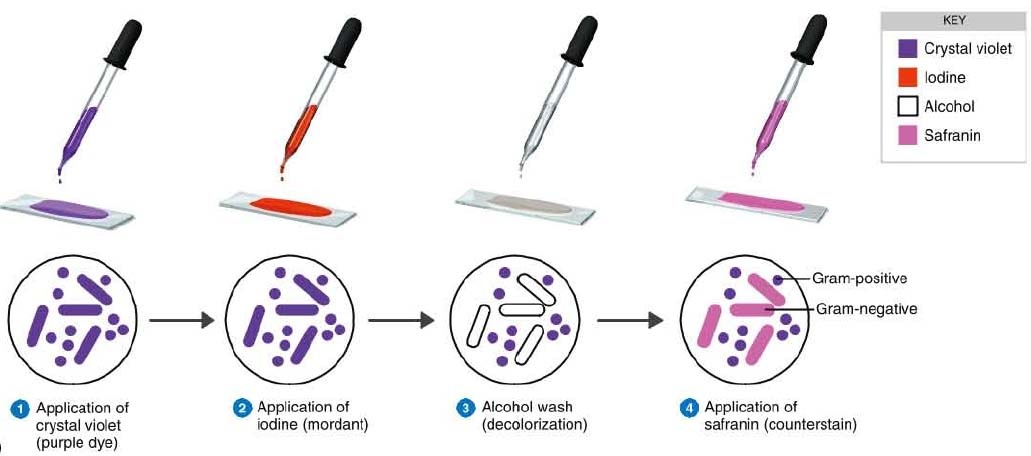
| Feature | Prokaryotic | Eukaryotic |
|---|---|---|
| Nucleus | Not present | Present |
| DNA | Circular | Nucleus (linear) |
| DNA Organisation | Proteins fold | Chromosomes |
| Extra chroma DNA | Plasmid | Only present in certain organelles (chloroplast, mitochondria) |
| Organelles | Non-membrane bound | Membrane Bound |
| Cell Wall | Present | Present in some cases |
| Ribosomes | Smaller | Larger |
| Cytoskeleton | Present | Present |
| Reproduction | Binary Fission | (a)sexual |
| Cell Type | Unicellular | Multi-cellular |
| Cell Surface-Membrane | Present | Present |
Endosymbiosis
Endosymbiosis is the theory that a larger cell engulfed bacteria with energy producing capabilities—eventually becoming chloroplasts and mitochondria.
Evidence includes mitochondria and chloroplasts dividing like bacteria; have individual DNA; dividing independently of the cell
Gram Staining
Microscopy stain to help identify different bacteria.

Gram Positive Bacteria
- Colour: blue
- More peptidoglycan
Gram Negative Bacteria
- Colour: red
- Less peptidoglycan